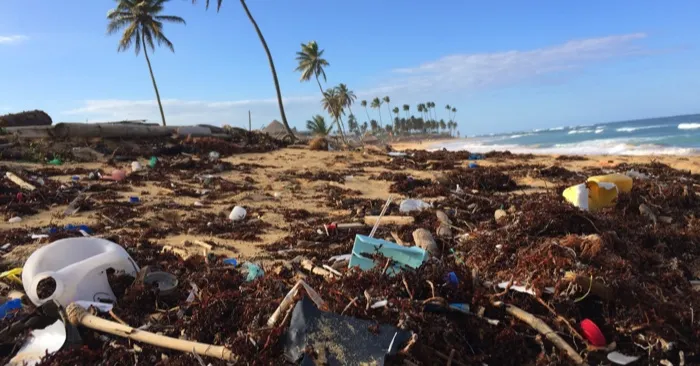
5 Eco-Dystopian Novels That Explore Environmental Worst Case Scenarios
Eco-Dystopian Novels. Environmental End of the World Books. Climate Fiction. These are all names of science fiction sub-genre that been growing steadily and captivating readers for decades. I’ve even heard the tongue in cheek term “cli-fi” used as a play on sci-fi. Between global climate change, increased destructiveness of natural disasters, and being in the middle of the pandemic, it’s easy to see why we, as readers, are worried about our environment. With or without these novels, we look into the future and can predict something in the environment ending our world. Whether we are avoiding these books or gravitation towards them right now, we can look at our present and see how mistreatment of the environment has already ended (or at least suspended) life as we know it.
Some may read this sub-genre primarily as a warning. Others will gravitate towards books like these for catharsis or entertainment. Probably, most readers will take away all three. Eco-dystopian novels, clearly establish the link between the health of our environment and the health of our societies and governments. In the vast collection of environmentally themed fiction, here is a list of five to get you started.
The Parable of the Sower by Octavia E. Butler
Published in 1993 by award winning Science Fiction author Octavia E. Butler, this novel imagines a (now very near) future of 2025 where global warming and pollution have lead to the complete destruction of society. The world hasn’t ended. But between racial tensions, extreme wealth inequality, water and food shortages, and rampant drug addiction, it’s in the process of ending. Lauren Olamina is a Black teenage girl who has a different vision for the future. After losing her family and her safe California enclave to violence and fire, Lauren and other refugees from her community must travel north to safety. Lauren has a condition called hyperempathy, which makes her experience the pain of others when she witnesses it. While some might view this as a weakness, it helps Lauren to conceive of Earthseed: an idea for how to save humanity both physically and spiritually. As Lauren seeks safety, she also works to find the first location to found her new society which she believes will be the next evolution of human existence.

Tentacle by Rita Indiana
Unpredictable. Post Apocalyptic. Queer. Punk. Mesmerizing. These are just of few of the words to describe this Caribbean eco-dystopian novel. In its original Spanish it was called La mucama de Omicunlé and was translated to English by Achy Obejas. Acilde Figueroa is a maid working in the heavily polluted and unequal city of Santo Domingo. Acilde is trying to save money for a futuristic drug that’s replaced gender affirmation surgery. As a side note, Indiana uses female pronouns for Acilde before taking the drug and male pronouns after. After undergoing this transformation, Acilde is pulled into an ancient prophesy that pulls the character back in time to help save the oceans with the help of a giant anemone. Highly experimental in narrative style, this book weaves together time travel, environmental havoc, and a “chosen one” narrative seamlessly.

American War by Omar El Akkad
The future of The United States Omar El Akkad imagines in this debut novel is bleak and completely tied to the future of our environment. In the late 21st century, much of the country is underwater because of climate change’s rising sea levels. And a second Civil War has erupted between the North and the South over the North’s banning of oil and all fossil fuels. Sarat Chestnut is from the half-underwater, neutral state of Louisiana. She and her family grow up in a refugee camp for Southerners. The continued violence against them, especially from the proliferation of drones, drives her to radicalism. Equal parts warning of environmental apathy and the horrors of modern war, this book is highly imaginative and extremely bleak at the same time.
Oryx and Crake by Margaret Atwood
When I recommend this book to people, which I do a lot, I describe it as The Handmaid’s Tale but about the environment instead of gender equality. But because the book is by Margaret Atwood, there is still a lot about gender in this story as well. In a nonlinear timeline, Snowman (once known as Jimmy) thinks he’s the last surviving human. He lives in a world devastated by the after effects of genetic engineering. He must push himself to search for answers, while also experiencing deep grief for his best friend Crake and Oryx, the woman they both claimed to love. Detailed and lushly written, this dystopian novel fully submerges you into this new, frightening world.

The Fifth Season by N.K. Jemisin
This Hugo Award winning novel is the first in Jemisin’s Broken Earth series. It takes readers away from our world, to a land called the Stillness. The Stillness is a single continent with major fault lines and volcanoes running through out it. It goes through different seasons. The fifth season signifies climate change with the destructive power to wipe out most, if not all, of the population. These dramatic environmental shifts has lead to the evolution of some people into orogenes. They have the power to sense and change energy, meaning they can both start or stop earthquakes, volcanic eruptions, and other forces of destruction. Orogenes are heavily oppressed and controlled by the governing powers or must live in hiding. Essun is a woman trying to live a normal life and raise her children to do the same. But when she comes home to find her husband has discovered her secret, murdered her son, and kidnapped her daughter, she will do anything to save her child. Of all the eco-dystopian books on this list, this one feels closer to fantasy than pure science fiction. But the themes of environmental distress and attempts to control the environment feel timely and applicable considering our world as well.









